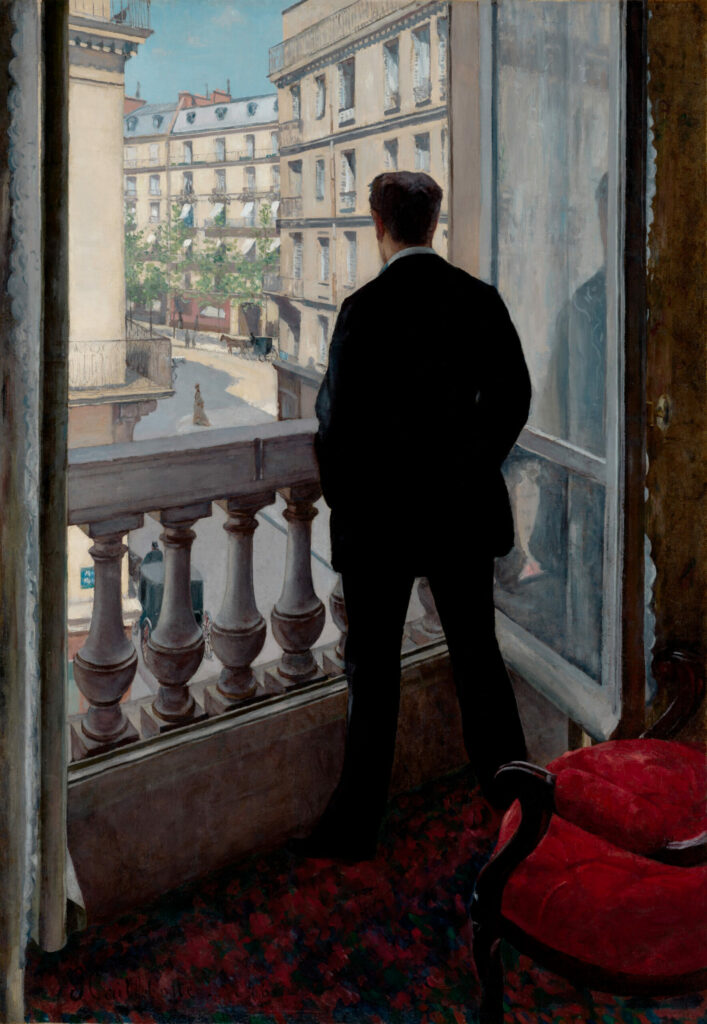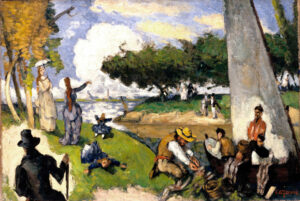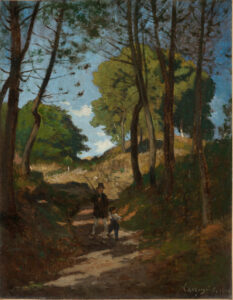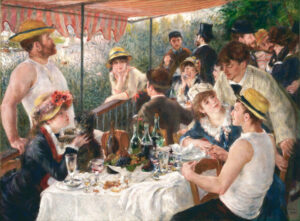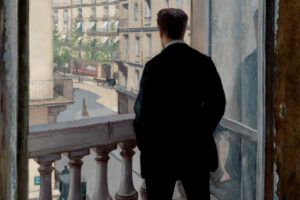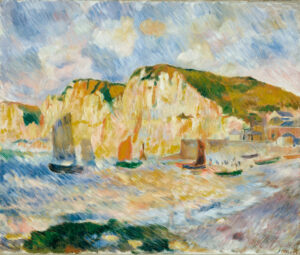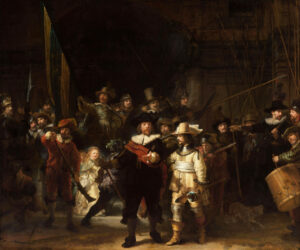A Silent Meditation on Parisian Modernity. Caillebotte offers us a silent meditation on Parisian modernity. The bold framing places the viewer within the intimacy of a bourgeois apartment, a discreet witness to an everyday scene imbued with mystery.
This young man in a black frock coat, standing confidently on his legs, contemplates the new city unfolding before him.
The artist brilliantly plays with contrasts: the muffled interior with its oriental-patterned carpet and crimson armchair stands in opposition to the brilliant luminosity of the exterior. The geometrically perfect Haussmannian buildings engage in dialogue with the dark silhouette of the protagonist.
Here, the painter captures the spirit of an era when Paris was transforming itself. This window becomes a symbol of the boundary between private and public spheres, between the interior world of the bourgeoisie and the urban bustle below. The isolated presence of a female passerby accentuates this impression of social distancing, so characteristic of this new urbanity.
Additional Information
- Title: “Young Man at His Window” by Gustave Caillebotte, 1876
- Dimensions: 116 x 81 cm (45 11/16 × 31 7/8 in.)
- Location: The J. Paul Getty Museum, Los Angeles, Getty Center, Museum Exhibition Pavilion, Gallery 1
- https://www.getty.edu/art/collection/object/10A2Y1
Gustave Caillebotte (1848-1894), both a painter and generous patron of the Impressionists, occupies a singular place in the history of French art. Born into a wealthy family, he was able to fully devote himself to his artistic passion while financially supporting his friends Monet, Renoir, and Pissarro.
His unique style, combining almost photographic precision with sensitivity to light effects, testifies to an innovative perspective on modern Paris. His exceptional collection of Impressionist works, bequeathed to the French State, today forms the heart of the Musée d’Orsay collection, thus ensuring this artist-collector a privileged place in French cultural heritage.

